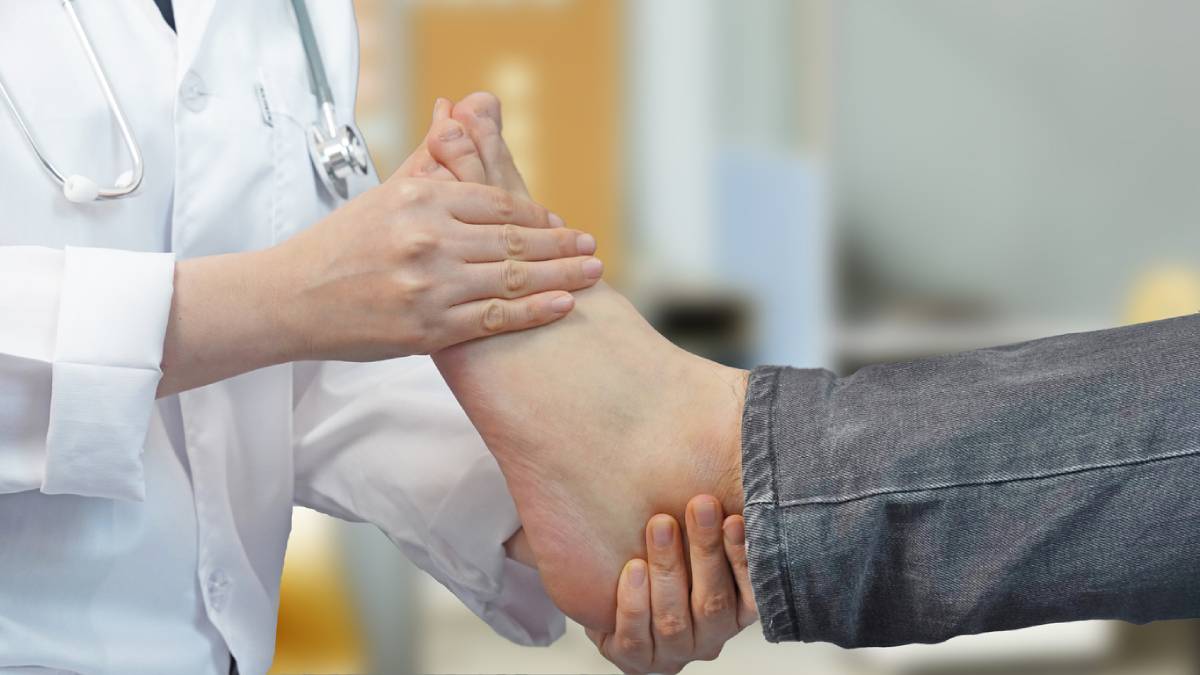Diabetic foot Charcot, a condition that can lead to severe foot deformities and complications, is often seen as a daunting challenge for those living with diabetes. But what if there were ways to reverse its effects and restore mobility? Understanding the mechanisms behind this condition and the details of diabetic foot wound care is crucial, as early intervention can significantly impact outcomes. In this article, we will answer the question, “Can you reverse diabetic foot Charcot?”, shed light on innovative treatments and lifestyle changes, and discuss when to consult a podiatrist.
Can You Reverse Diabetic Foot Charcot?
In the sense that the damage caused to your bone cannot be completely reversed, diabetic foot Charcot cannot be reversed. Nevertheless, innovative treatment can significantly improve symptoms and prevent any future complications. As with most things, a proactive approach is the most effective way to achieve optimal outcomes.
Understanding Diabetic Foot Charcot
Diabetic foot Charcot or Charcot foot is the damage that results from nerve damage in the feet. When a person has severe nerve damage to the feet, they may be unable to feel pain from minor foot injuries. Because of this reduced sensitivity in their feet, they face several serious complications. One example is the worsening of existing injuries because the person does not feel them and subsequently continues to walk on the affected area. Another effect may be the weakening, fracturing, and shifting out of place of the bones in the feet. This process of progressively sustaining damage to the bones and joints is Charcot.
Key Signs and Symptoms
When you experience pain, it is your body’s way of letting you know that something is wrong. Individuals with Charcot foot do not experience pain, so when the foot undergoes trauma, they may not notice it. This can lead to severe health risks and complications in one’s daily life.
To minimize any Charcot foot-related damage, be aware of key signs and symptoms.
Early symptoms:
- Discoloration
- Redness
- Swelling
- A feeling of heat or warmth
More advanced symptoms:
- Rocker-bottom foot
- Toe shape changes
- Ankle shape changes
- Foot ulcers
Who Is at Risk?
It is important to note that not every person with Charcot has diabetes. That being said, a person is more likely to develop Charcot if they have diabetes. Luckily, just because you have diabetes does not mean you are destined to develop Charcot foot. Individuals are more likely to develop Charcot foot if they smoke, regularly drink alcohol, and have other conditions, including:
- High blood pressure
- Obesity
- High cholesterol
- Kidney disease
Causes
To develop Charcot, a person must have neuropathy that prevents them from feeling pain in their feet and have sustained an injury to their feet.
These conditions are more likely to be met in people who have difficulty managing their blood sugar and experience elevated levels more frequently. Specifically, if hyperglycemia occurs often for an extended period, you can develop nerve damage, especially in your lower extremities. The sustained nerve damage, in turn, reduces sensation in your affected foot. With the sensation in the feet gone, people miss the signs of injury or complication, and easily treatable complications become quickly and silently exacerbated.
Treatment Options
Attentiveness is the most important part of Charcot foot treatment. If you do notice your foot has sustained injury, stop walking on the affected foot immediately and contact your healthcare provider as soon as possible. Your physician may suggest:
- Taking weight off of your foot with the use of a cast, brace, crutches, walker, or wheelchair.
- Orthotics and footwear alterations.
- Physical therapy.
- Surgical correction.
You and your healthcare team will discuss the best treatment plan for your needs. They will also discuss the treatment process with you and help manage your expectations. Medical treatment is advancing rapidly, but the effectiveness of your treatment will depend on the specifics of your situation.
Reversing Diabetic Foot Charcot
Reversing structural damage caused by diabetic Charcot foot remains a complex challenge, but there is hope for those with the condition. With early detection and proper management, patients can significantly improve their outcomes and quality of life. The key lies in a multidisciplinary approach, combining vigilant foot care, strict glucose control, and innovative therapies.
While a complete reversal may not always be achievable, many patients can achieve stability, reduce complications, and regain mobility. With the right care and support, you could gain control over your diabetic foot Charcot and be on your way to a happier future.
Diabetic Foot Care in Los Angeles
Call our experienced podiatrist today to learn more about diabetic foot Charcot and if you are a good candidate for our treatment.


